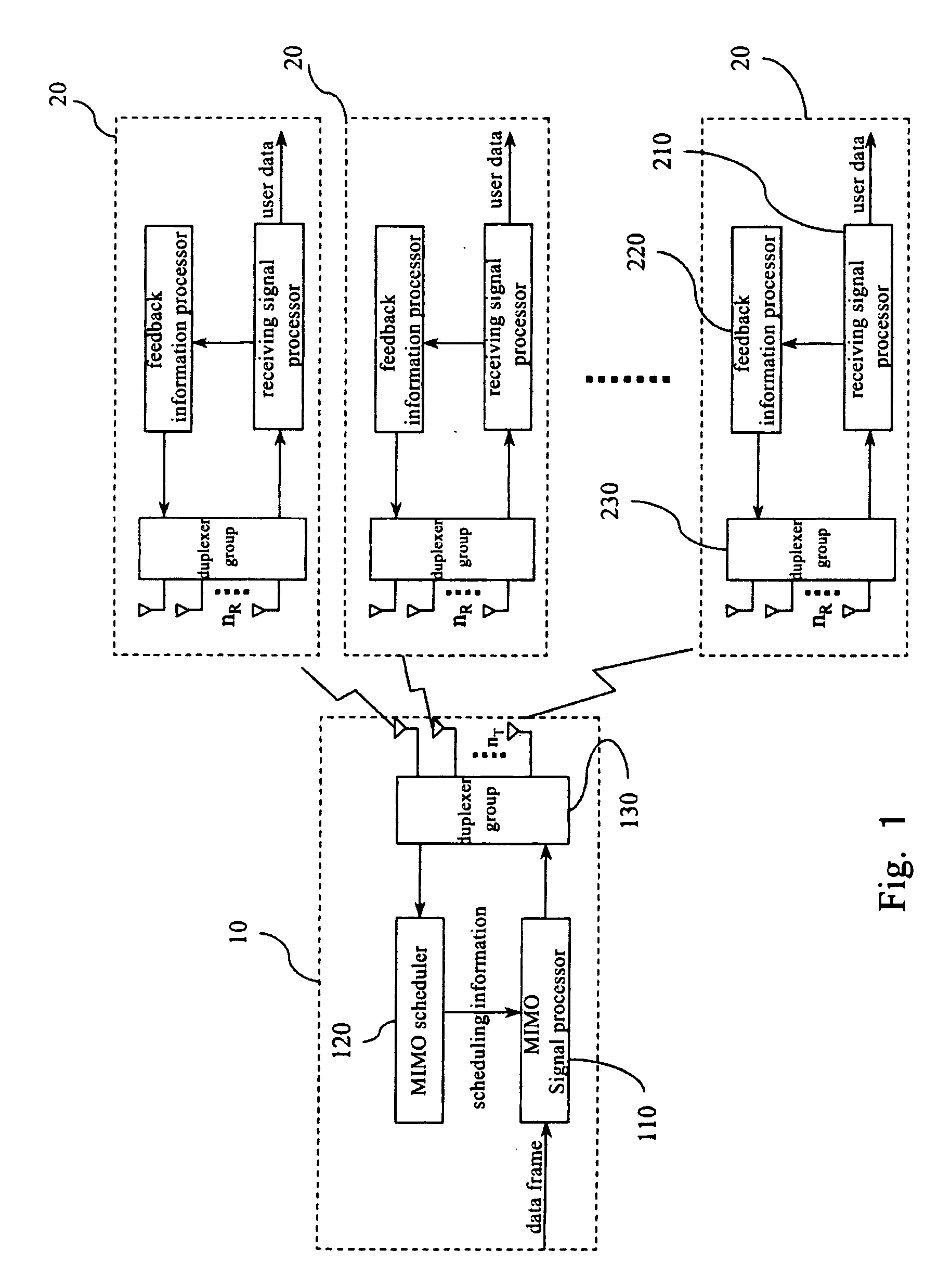MIMO communication system and method capable of adaptive user scheduling
a communication system and user scheduling technology, applied in the field of multi-input multi-output (mimo) system and adaptive user scheduling method, can solve the problems of multiple access, inability to raise the communication speed by infinitely increasing the spectrum width, and inability to set resources irrespectively
- Summary
- Abstract
- Description
- Claims
- Application Information
AI Technical Summary
Benefits of technology
Problems solved by technology
Method used
Image
Examples
example 1
Scheduling Example 1
[0096]FIG. 11 illustrates the scheduling for the MIMO communication system of the present invention. The left part of FIG. 11 shows the simplified structure of the MIMO communication system, and the right part illustrates fading coefficients between the receiving antennas and the corresponding transmitting antennas.
[0097] As illustrated in FIG. 11, the scheduling system includes 1 transmitting terminal 10 and 2 users (the receiving terminals) A and B, wherein, the transmitting terminal 10 has three transmitting antennas 14A, 14B and 14C mounted on, and users A and B have receiving antennas 12A and 12B, respectively.
[0098] When the receiving antennas 12A and 12B of the users A and B receive the channel estimation signals sent from the transmitting antennas 14A, 14B and 14C, respectively, the MIMO receiving signal processors 212 calculate the fading coefficient between each receiving antenna and each transmitting antenna, wherein, the fading coefficients between ...
example 2
Scheduling Example 2
[0124]FIG. 12 illustrates the scheduling for the MIMO communication system of the present invention. The left part of FIG. 12 illustrates the simplified structure of the MIMO communication system, while the right part shows fading coefficients between the receiving antennas and the corresponding transmitting antennas. For the convienience of describing the present invention, same components are illustrated with same reference signs used in FIG. 11.
[0125] As illustrated in FIG. 12, the scheduling system includes one transmitting terminal 10 and two users A and B, wherein, the transmitting terminal 10 has three transmitting antennas 14A, 14B and 14C mounted on, and users A and B have receiving antennas 12A and 12B, respectively.
[0126] When the receiving antennas 12A and 12B of the users A and B receive the channel estimation signals sent from the transmitting antennas 14A, 14B and 14C, respectively, the MIMO receiving signal processors 212 calculate the fading co...
PUM
 Login to View More
Login to View More Abstract
Description
Claims
Application Information
 Login to View More
Login to View More - R&D
- Intellectual Property
- Life Sciences
- Materials
- Tech Scout
- Unparalleled Data Quality
- Higher Quality Content
- 60% Fewer Hallucinations
Browse by: Latest US Patents, China's latest patents, Technical Efficacy Thesaurus, Application Domain, Technology Topic, Popular Technical Reports.
© 2025 PatSnap. All rights reserved.Legal|Privacy policy|Modern Slavery Act Transparency Statement|Sitemap|About US| Contact US: help@patsnap.com



